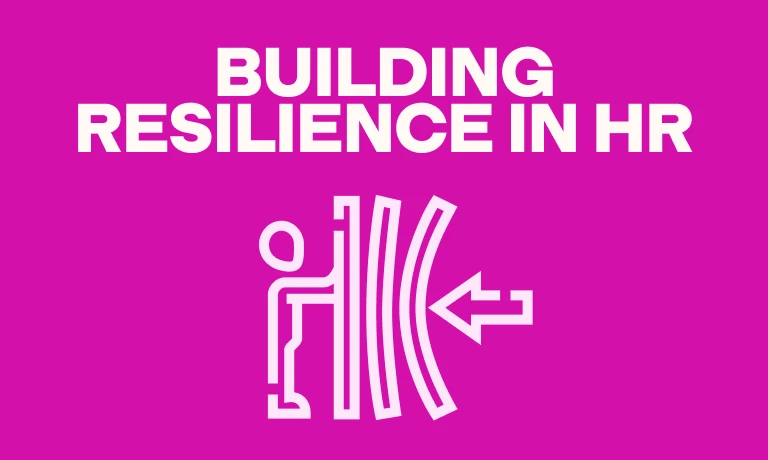Numerous companies say they’re “people first,” but it’s just a buzzword for too many of them. If you claim to put people first without living and breathing the values accompanying it, your employees will notice and leave.
Putting people first is about improving your company culture and having leadership who thinks about the people driving your company forward.
Clarifying and embedding these values into your company makes you a people first organization – a place where people want to work.
This article discusses what putting employees first means, its benefits, and the actionable strategies to put people first.
Table of contents
- What does it mean to “put people first?”
- Why should organizations adopt a people first culture?
- Putting people first: 10 ways to build an employee first culture
- People first companies in practice: 3 people-first culture examples
- Put people first to build a stronger workforce
- Frequently asked questions about people first leadership
What does it mean to “put people first?”
Putting people first is a business philosophy focused on prioritizing employees by considering their needs and creating a positive work environment. It began showing up in a business sense in the early 2000s, although its exact origin is unknown.
Regardless of where the idea came from, there’s value in putting the wellbeing of your workers before the company’s bottom line.
That’s partly because the job market has shifted in favor of applicants. A recent study showed that job openings have risen by 22%, but applications have dropped by 23%.
The newest generation entering the workforce also encourages businesses to develop a people-centric culture. Gen Z demands better treatment at work.
Moreover, your people are precious resources that you should treat right to increase retention and job satisfaction. Plus, when you put people first, it makes your organization an attractive place to work, which catches the eye of top talent.
Why should organizations adopt a people first culture?
A people-first culture benefits employees and the company alike.
Here are the key advantages of a people first culture:
Employee benefits | Employer benefits |
- Less stress - Better work-life balance - Feeling appreciated - Feeling human | - Higher retention - Better performance - Higher employee engagement - Better reputation |
Considering the data surrounding a negative work environment, these benefits aren’t surprising.
An MIT Sloan study found that the biggest turnover driver is a toxic corporate culture. This factor ranked 10.4 times higher than compensation issues.
A toxic work environment is unhealthy for your employees. They could grow bitter and develop workplace trauma if they don’t quit.
Many leaders who take a people-first approach say it is simply logical. Their workers are central to their business, so it makes sense that focusing on them makes a better company.
Good leaders understand that when employees feel cared for, they do better work and feel a deeper connection to company values.
J. Willard Marriott, the founder of the Marriott Corporation, once said that if you take care of your people, your people take care of your customers, and those customers return.
The best insights on HR and recruitment, delivered to your inbox.
Biweekly updates. No spam. Unsubscribe any time.
Putting people first: 10 ways to build an employee first culture
Everyone benefits when you put people first, meaning ahead of your bottom line. But what does that entail?
Let’s look at the best strategies to make a people first culture a core part of your corporate identity.
Putting employees first at a glance
Strategy | Benefits |
Start from the top and get your leaders to commit to being “more human” | Build a people-first company from the top down and lead by example |
Live these values at every level | Create a company culture that drives employee satisfaction |
Ensure you have people-focused managers | Use your managers to drive your people-first culture |
Work on your employee experience | Stay true to your people-first values at every step of the employee life cycle |
Build a great onboarding experience | Show your employees from their first day that you put them first |
Offer a robust remuneration package with customized, inclusive benefits | Make your company more desirable to top talent |
Measure and manage your people factors | Learn how to put people first by asking your employees what they need |
Hold regular one-on-one meetings that focus on development and growth | Foster meaningful connections between employees and managers, improving your company culture |
Hire and promote fairly | Show new hires and existing workers that you treat people fairly and offer internal mobility |
Hire people who shape your culture | Drive a people first culture at every level of your organization by hiring for culture add |
1. Start from the top and get your leaders to commit to being “more human”
Leaders and executive teams carry the power to influence your company. They can sway company culture and promote a people-first approach.
Discussing a people-centric company with them encourages them to commit to building an organization with a clear purpose and values.
People first leadership comes from the concept of humble leadership, in which leaders:
Treat employees like people and not a means to an end
Don’t solely focus on numbers and targets
Don’t obsess over costs
Show emotional intelligence by recognizing employee effort and encouraging a culture of noticing more than failure
Humble leaders serve their employees, helping them grow and learn instead of condescending to them.
People first leadership is the foundation for building a healthy company culture that instills employee loyalty. It’s also the first step to promoting these values company-wide, which leads to the next point.
2. Live these values at every level
Every part of your organization must live and breathe these values. If even one part of your company treats its team members unethically, it undermines other departments that put their people first.
For example, if an employee is well-supported by their immediate team but treated callously and coldly by your HR staff, the negative experience undercuts the positive.
Ensuring that every level of your company follows these practices is essential to having a people-centric business.
Here are a few tips to encourage a company full of people first human resources:
Be open and honest
Hire the right leaders
Define what “people first” means to you
Stay committed and have conviction in your values
Discuss a people first approach with the leadership team
Weave people first practices into your company culture
Company culture is a top driver of job satisfaction. A positive company culture has far-reaching ramifications, influencing an organization passively and continuously.
3. Ensure you have people-focused managers
Managers have a direct effect on employee satisfaction and retention. You should use leadership development, like encouraging your managers to listen to a people-first podcast or read training materials, to help them develop an employee-first mindset.
One study shows that 57% of employees have quit because of a bad manager. A further 32% have considered leaving owing to the manager, and only 12% have never considered it.
Negative managerial behaviors, like micromanaging, make it hard to retain employees and undermine your efforts to build a people first culture.
The best managerial skills for a people-centric company include managing employees as individuals, continuous coaching, and inclusive treatment.
How can you ensure managers have these crucial skills? Here are a few ideas:
Encourage people first goals for managers during one-on-one meetings
Arrange formal training sessions to boost skills
Build managerial skills into your managers’ development plans
Use skills testing to hire individuals who put people first
Using talent assessments to evaluate your managers helps ensure they have the right people-centric skills in the early hiring stages. Here’s how:
Establish which skills your managers need to embody an employee first culture. Consider qualities like business ethics.
Understand which hard skills your new manager needs to thrive.
Using our skills testing platform, build an assessment that evaluates these skills. You can add up to five tests per assessment and ask candidates to complete multiple assessments.
Add any custom questions your organization needs.
Send out the assessment link to your candidates and watch their responses roll in.
Compare and evaluate candidates’ assessment scores directly.
Try our free demo to build the right assessment for your new hires today.
4. Work on your employee experience
The employee experience refers to an employee’s entire journey in your company. It includes everything involving their role, workspace, and leaders.
Improving your employee’s entire experience is directly tied to a people-centric company. It includes:
A smooth hiring process
Excellent onboarding
Having a great manager who knows how to coach
Aligning employees with company culture
Access to learning and development
A robust hiring process is vital because it’s a candidate’s first impression of your organization.
When you hire using methods that measure capability, an employee can start confidently. Hiring a worker using pre-employment testing shows the employee and the company that they have the skills to get the job done before their first workday.
Employee experience is easier to monitor than you think. Read our guide to employee experience software to learn more.
5. Build a great onboarding experience
A good onboarding experience shows new joiners you’re serious about treating them well. New hires don’t know their responsibilities or company procedures without proper onboarding.
Here’s an example of a great onboarding process:
Appoint a dedicated onboarding mentor
Offer onboarding packages and send welcome messages over Slack
Prepare IT sessions
Appoint a culture mentor to answer questions about culture and formality
Clarify role and responsibilities
It’s also a good idea to make proper introductions to the team. For in-office employees, consider hosting a group lunch. Welcome remote employees with a team video chat as a way to include them in your people-first strategy.
Want to dive deeper into employee onboarding?
Read our complete guide. It’s packed with tips, step-by-step strategies, and industry insights —to build a seamless employee onboarding plan.
Onboarding works best alongside a skills-based hiring strategy. Personality and culture add tests help hiring managers determine which candidates are likely to integrate into their teams.
Use these tests to keep your onboarding process frictionless:
The Big 5 (OCEAN) personality test evaluates five dimensions of an applicant’s personality
Our Culture Add test uses custom criteria to assess whether a candidate is likely to contribute to your company’s culture
The Motivation test measures candidates’ expectations of the role against the job description
Our Enneagram test identifies an employee’s core beliefs and worldview
The 16 Types test shows how candidates navigate challenges and opportunities
Check out some of these tests
Check out some of these tests using our free forever plan!
6. Offer a good remuneration package with customized, inclusive benefits
Relevant, useful benefits show your employees that you know they’re human beings with real needs.
Your workers do their jobs for compensation, so it isn’t surprising that fair pay encourages a more people-centric company.
Plus, providing your workers with a solid perks package differentiates a good job offer from a great one. An offer with desirable benefits stands out from others with similar salaries.
Here are a few of our favorite employee benefits:
Family planning and childcare
Financial planning assistance
Mental health and wellness support
Flexible working arrangements
Learning and development assistance
Work-life balance policies
For some candidates, these benefits are crucial. Excluding them from your perks package means excluding these candidates from your talent pool.
7. Measure and manage your people factors
Measure satisfaction, diversity, and inclusion to reinforce a positive environment. We recommend using employee pulse surveys to gather this information.
Send out different surveys for each metric containing questions to help you measure them better. For example, a job satisfaction survey may have questions like:
Do you feel connected to your coworkers?
Do your managers value your feedback?
Do you feel recognized for your contributions?
Do you think communication is effective and timely?
Do you find your work meaningful?
Does our organization offer good opportunities for career growth?
Use this information to identify and fix issues. For instance, if too many employees answer that your company does not offer good growth opportunities, look into building a professional development program.
If a survey shows a lack of workplace diversity, begin a recruiting initiative to hire for diversity, such as hiring more age-diverse employees or more LGBTQIA+ individuals.
8. Regular one-on-one meetings that focus on development and growth
Many underestimate the power of regular one-on-one meetings (think every one to two weeks). When done right, these meetings can benefit everyone.
One-on-one meetings enable managers and employees to discuss meaningful topics – not just hit targets. Don’t focus on development and growth alone, but make time to also talk about struggles, family, and hobbies.
Good one-on-one meetings let workers know you recognize their humanity.
You can encourage these meetings in many ways:
Promote one-on-ones from the top down: Leaders having one-on-one meetings with other leaders encourages the entire organization to have positive meetings
Offer training sessions for managers: Teach managers critical discussion topics, like employee aspirations and goals, as well as struggles and mental health
Build a positive culture: Nurture a culture where one-on-ones are a positive experience and an opportunity to discuss growth and development
9. Hire and promote fairly
How an employee moves through your company shows whether you’re people-centric.
Unfair hiring and promoting come in two main varieties:
Passing over qualified employees for roles or promotions
Hiring new employees based on connections, nepotism, or bias
It can be demotivating when a long-term worker routinely loses to others in promotions or new roles. It tells them that their company doesn’t believe in their continued growth.
Unsurprisingly, companies that excel at internal mobility retain staff for longer.
Skills-based hiring is a hiring process that puts people first. Hiring based on capability shows current and potential employees that your organization is fair.
Remember, skills testing isn’t one size fits all. Our skills testing software lets you tailor assessments to roles so you can assess candidates based on what matters.
For example, an assessment for an accountant may look like this:
Intermediate Math test
Critical Thinking test
Advanced Accounting test
Accounting Terminology (US) test
Attention To Detail test
These tests evaluate a candidate’s skills without needing a resume, opening the doors for more potential candidates. Find all of them in our test library.
Skill tests don’t just reduce bias and encourage fair hiring in an external hiring process. They also facilitate internal mobility.
10. Hire people who shape your culture
If you recruit positive employees, they can help you transform your company into a people first organization.
Your culture shifts and evolves the more you hire individuals who prioritize people first. This move has far-reaching effects that nurture a people-centric company for years.
Skills testing facilitates this process, enabling you to assess if a candidate is right for your company.
TestGorilla’s Culture Add test lets you set criteria for your company’s culture, then assess the candidate to see if they would be a healthy addition to your culture.
In addition, our personality tests evaluate a candidate’s soft skills, lifestyle, worldview, and how they communicate and solve problems, among other things.
Assess the skills that put people first
Learn how to assess the skills that put people first with our demo!
People first companies in practice: 3 people-first culture examples
Now that you understand the principles of a people-first approach, let’s look at three companies that put these ideas into practice.
1. TestGorilla
At TestGorilla, we’re proud to say that we put people first. Here are just a few of the ways we strive to be a people-first company:
Our 100% remote structure gives our employees the freedom to work from anywhere and lets us access top talent, regardless of location
We live our values, including mutual support and acting with integrity, and we hire candidates who share those principles
We use talent assessments when hiring, ensuring that all our hires can hit the ground running in their new roles
Our approach gets results. Current and former TestGorilla hires have scored us an amazing 4.9 on Glassdoor.
2. Boingo Wireless
Boingo Wireless, a wireless internet company, has developed an employee first culture in a range of effective ways:
Offering non-traditional benefits, including an unlimited PTO policy and company wellness events
Establishing multiple employee resource groups so employees from all walks of life feel supported and heard
Providing perks that matter to employees, including healthcare options, an opt-out 401(k) savings plan, and yearly financial literacy training
These approaches show employees that their company sees them as whole people, making them feel valued and respected at work.
As a result, this people-first company boasts a high retention rate, with many employees celebrating 15-year work anniversaries.
3. TruTrip
TruTrip, a Singapore-based business travel management company, found that a flawed hiring process negatively affected employee experience.
New hires who didn’t meet the requirements of the role created collaboration issues that impacted everyone, from the new hires to more long-standing employees.
The firm implemented skills-based hiring to refine the hiring process and enable managers to focus on putting the people first on their teams. As a result:
The company’s hiring process is more consistently successful
New employees enjoy a smoother onboarding process
Long-standing employees have a better experience of collaborating with new hires
The decision to move to skills-based hiring reflects a commitment to maintaining an employee first workplace culture.
Put people first to build a stronger workforce
Committing to putting people first is one of the most powerful ways to attract top talent.
It increases retention and satisfaction by improving your company’s employee experience for new hires and long-term workers alike.
Start putting people first today by implementing skills-based hiring. Integrating talent assessments and personality tests into your hiring process makes hiring employees who live your values and contribute to a people-first culture easier.
First, try our demo or product tour to get an instant insight into what our tests can do for you. Next, register for your free forever plan, and revolutionize talent acquisition in your company.
Frequently asked questions about people first leadership
Now that you understand why and how your company should put people first, let’s finish this guide with simple answers to common questions.
What is a people first work culture?
A people first work culture is a culture that prioritizes the wellbeing and experiences of workers. You need to understand and respond to your employees’ needs to build this culture. This focus makes your organization an attractive place to work, which catches the eye of top talent and helps you retain your best employees.
What is the value of putting people first?
Putting people first improves your company culture and encourages your leaders to think about the people who make your company successful. Embedding those values into your company makes you a place where people want to work, bolstering your chances of attracting top talent.
How do you demonstrate putting people first?
Ensure everyone at your company commits to people-first values
Monitor and develop the employee experience
Onboard employees sensitively and effectively
Pay employees fairly and offer them the benefits they want
Prioritize employee development
Hire and promote staff fairly
What leadership style puts people first?
Servant leadership is closely associated with putting employees first. In general, servant leaders see themselves as serving those they lead, which empowers their teams to achieve greater success.
What’s another way of saying people first?
Other ways of saying “people first” include “employee first,” “worker first,” and “staff first.” They all refer to the same concept of building a productive workplace where staff is valued and respected.
You've scrolled this far
Why not try TestGorilla for free, and see what happens when you put skills first.





















